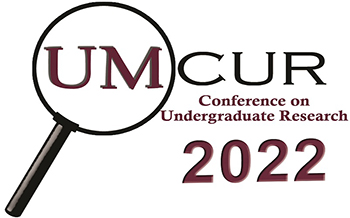Project Type
Presentation
Faculty Mentor’s Full Name
Benjamin Colman
Faculty Mentor’s Department
Ecosystem Science and Restoration
Abstract / Artist's Statement
Revegetating riparian soils made bare during restoration is important to stabilize soils and minimize the spread of non-native invasive plants. Seeding is a commonly used approach for revegetation, but its efficacy and factors that limit its success remain understudied. It is known that nutrient availability can limit plant growth and establishment, and that seed addition rates can also play a role. However, the success of these approaches has varied, presenting an opportunity to study the optimization of revegetation techniques. In this study, we examined ways to increase the efficacy of reseeding riparian areas on a reach of Ninemile Creek in Western Montana by looking for evidence of nutrient limitation and seeding limitation. Ninemile Creek was historically degraded by placer mining, which covered the riparian areas with 10 meter tall gravel piles. Extensive restoration efforts have been conducted by Trout Unlimited in the Ninemile Valley through removing the gravel piles and reconfiguring the stream channel and floodplain. We established plots in a reach that had been restored in 2020 with a combination of nutrient additions and low or high density seeding rates. Our results suggest that nutrients were more limiting to the establishment of riparian plants than seed at this site, providing new insights to Trout Unlimited and others on how to optimize their revegetation efforts.
Category
Life Sciences
Examining Factors Limiting Post-Restoration Riparian Revegetation in Western Montana
UC 331
Revegetating riparian soils made bare during restoration is important to stabilize soils and minimize the spread of non-native invasive plants. Seeding is a commonly used approach for revegetation, but its efficacy and factors that limit its success remain understudied. It is known that nutrient availability can limit plant growth and establishment, and that seed addition rates can also play a role. However, the success of these approaches has varied, presenting an opportunity to study the optimization of revegetation techniques. In this study, we examined ways to increase the efficacy of reseeding riparian areas on a reach of Ninemile Creek in Western Montana by looking for evidence of nutrient limitation and seeding limitation. Ninemile Creek was historically degraded by placer mining, which covered the riparian areas with 10 meter tall gravel piles. Extensive restoration efforts have been conducted by Trout Unlimited in the Ninemile Valley through removing the gravel piles and reconfiguring the stream channel and floodplain. We established plots in a reach that had been restored in 2020 with a combination of nutrient additions and low or high density seeding rates. Our results suggest that nutrients were more limiting to the establishment of riparian plants than seed at this site, providing new insights to Trout Unlimited and others on how to optimize their revegetation efforts.
